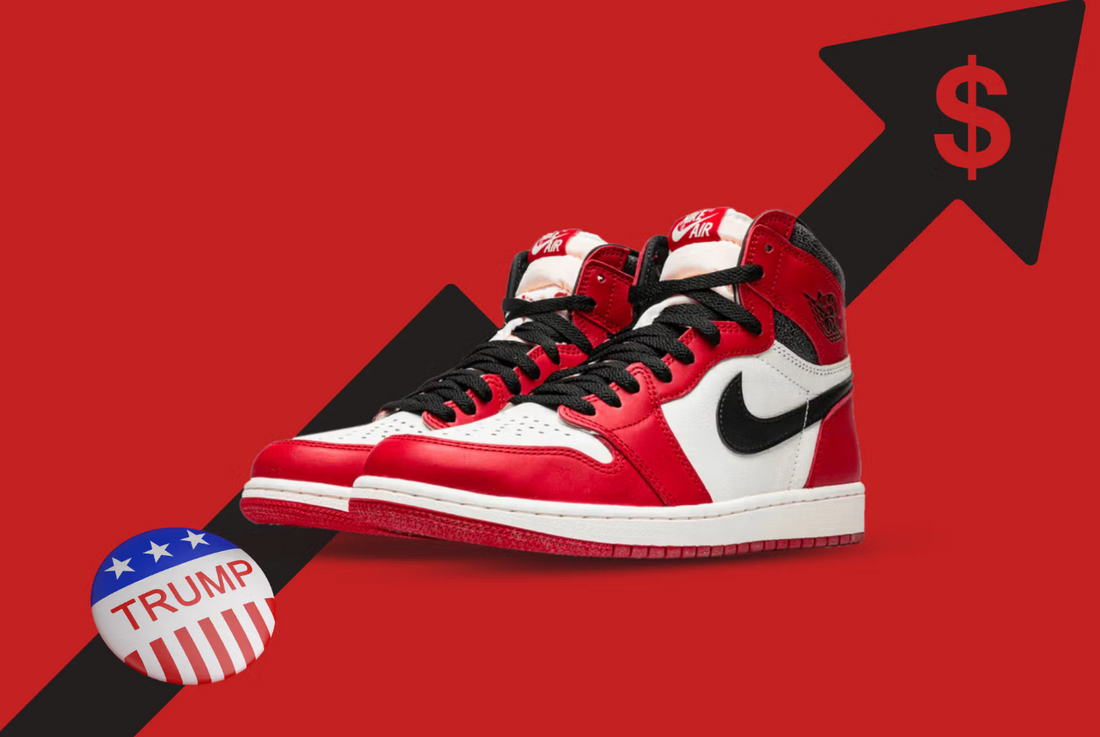
Are Tariffs Driving Up Sneaker Prices in 2025?
Share
If you’ve been buying or reselling sneakers lately, you’ve probably noticed the jump in retail and resale prices. While hype and demand play a big role, there’s another factor pushing sneaker prices higher in 2025: tariffs.
What Are Tariffs, and Why Do They Matter?
Tariffs are taxes placed on imported goods. When countries impose tariffs on products coming from overseas—especially from major manufacturing hubs like China, Vietnam, and Indonesia—the cost of producing those goods goes up. In the sneaker world, this is a big deal because most sneakers are manufactured abroad.
When tariffs rise, brands like Nike, Jordan Brand, Adidas, and New Balance often pass those increased costs down the chain—to retailers, resellers, and ultimately, consumers.
Tariffs and the Sneaker Industry: A Price Hike Breakdown
Sneakers, especially performance and lifestyle models, fall under specific import categories that can be hit with tariffs as high as 20% or more. In recent years, trade tensions between the U.S. and China have led to new or extended tariffs on footwear imports.
This means the cost to land a sneaker in a U.S. store has increased. For example:
-
A sneaker that used to cost $100 to manufacture and import might now cost $120 or more.
-
Brands adjust by raising MSRP, shrinking profit margins, or limiting production.
As a result, we're seeing higher retail prices. Jordans that used to retail at $160 are now priced at $180 or even $200. Limited releases and collabs—like the Union LA Jordan 1s or Off-White Dunks—are climbing even higher at retail, and the resale market follows suit.
Impact on Resellers and Buyers
For resellers, these price hikes mean:
-
Higher buy-in costs (your upfront cost is now steeper).
-
Tighter margins unless the sneaker has strong hype or limited supply.
-
Increased pressure to flip fast, as the market adjusts to new price norms.
For everyday buyers and collectors:
-
Sneakers are becoming less accessible.
-
Retail drops feel riskier when paying more for the same silhouette.
-
Budget-conscious sneakerheads are shifting toward GR (general release) pairs or exploring secondhand platforms like GOAT, StockX, or eBay.
Brands Are Responding—Sort Of
To combat rising costs, brands are:
-
Shifting production to other countries like Vietnam or Indonesia.
-
Exploring automated manufacturing closer to key markets.
-
Releasing more limited-edition collabs to justify higher prices.
Still, these changes take time. In the meantime, tariffs are here, and sneaker prices are feeling the pressure.
What’s Next?
Unless tariffs are lifted or production costs drop, sneaker prices will likely continue rising. Expect:
-
More $200+ retail price tags on Jordans and Yeezys.
-
Slimmer margins for resellers.
-
More demand for affordable, wearable GRs.
Tariffs may not be the flashiest topic in sneaker culture, but they’re one of the key reasons sneaker prices are rising in 2025. Whether you’re copping for the toe or flipping for profit, understanding the global economics behind your kicks is more important than ever.

